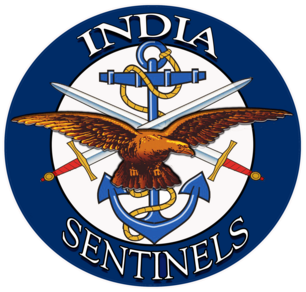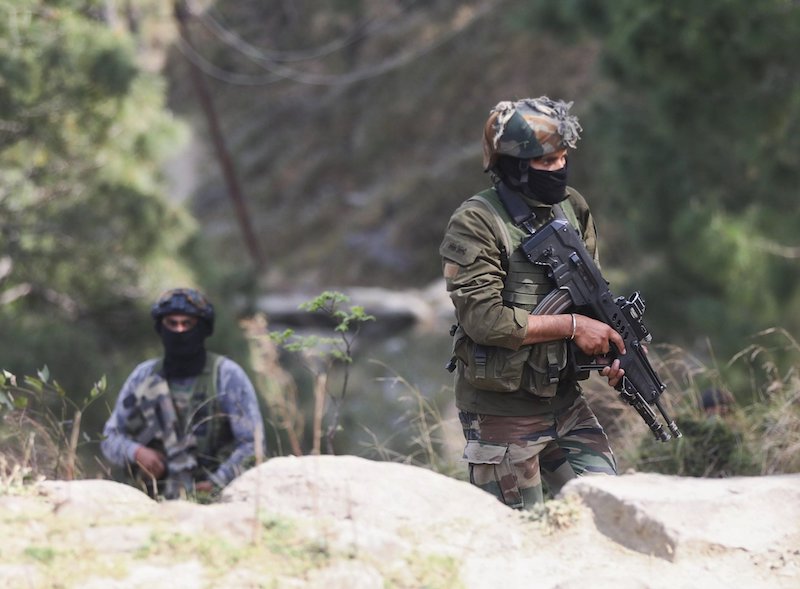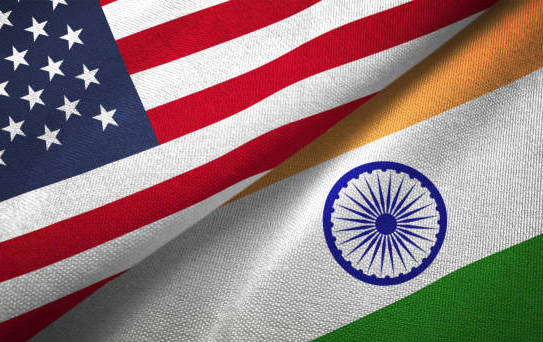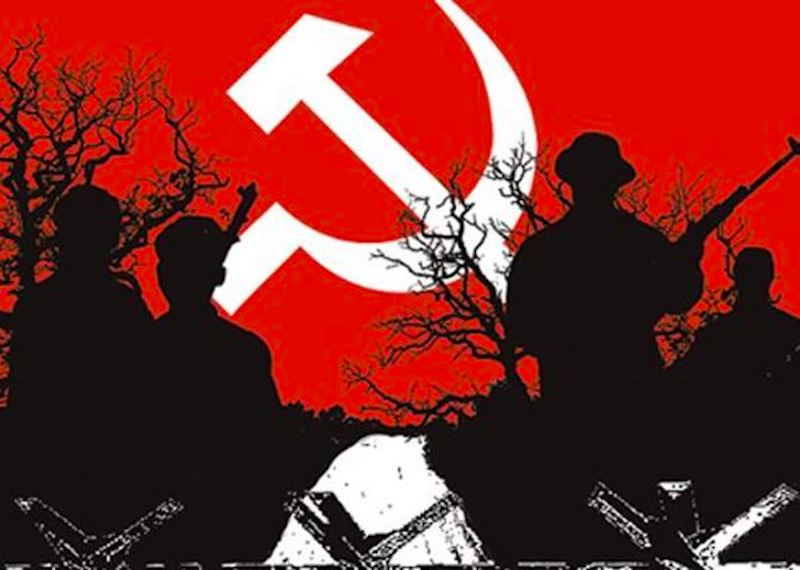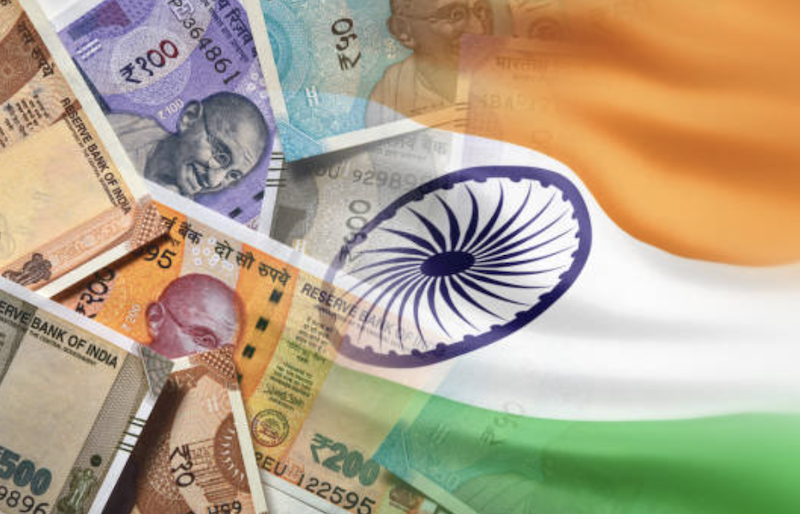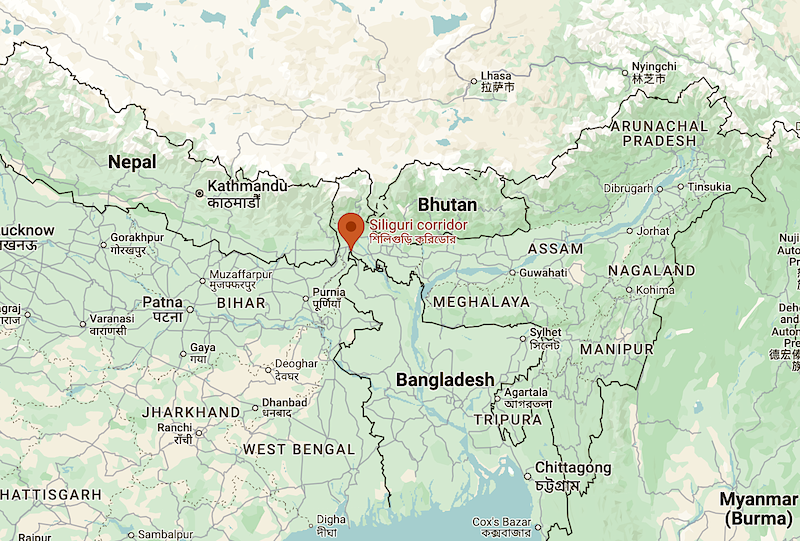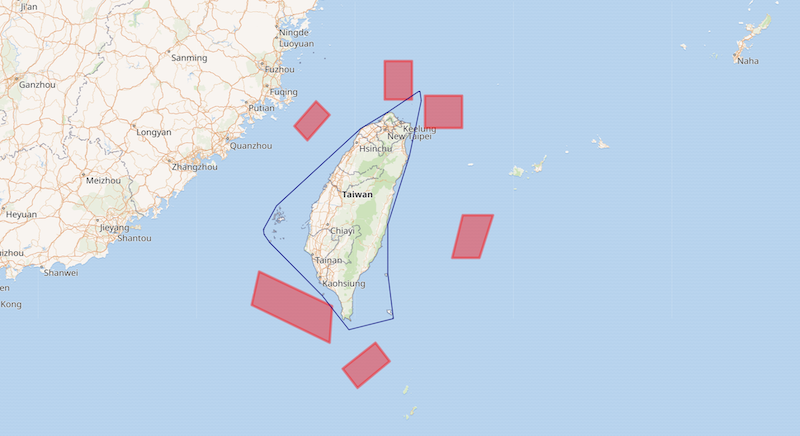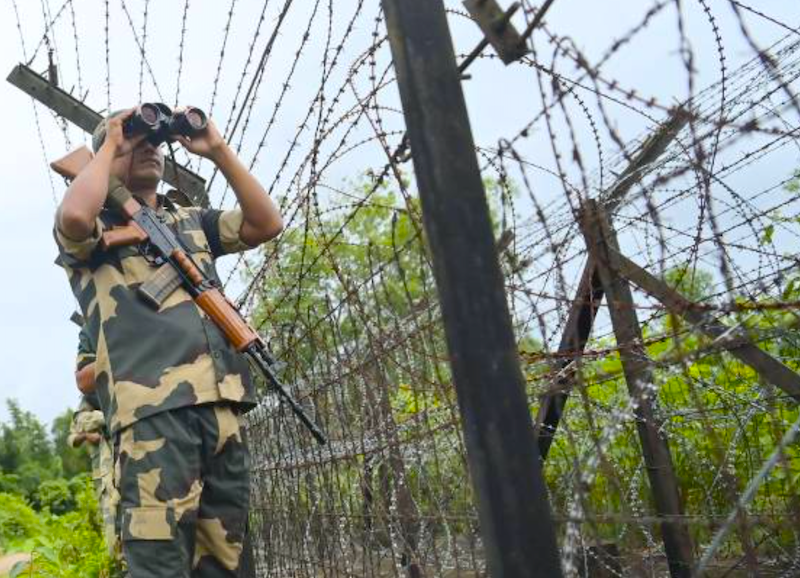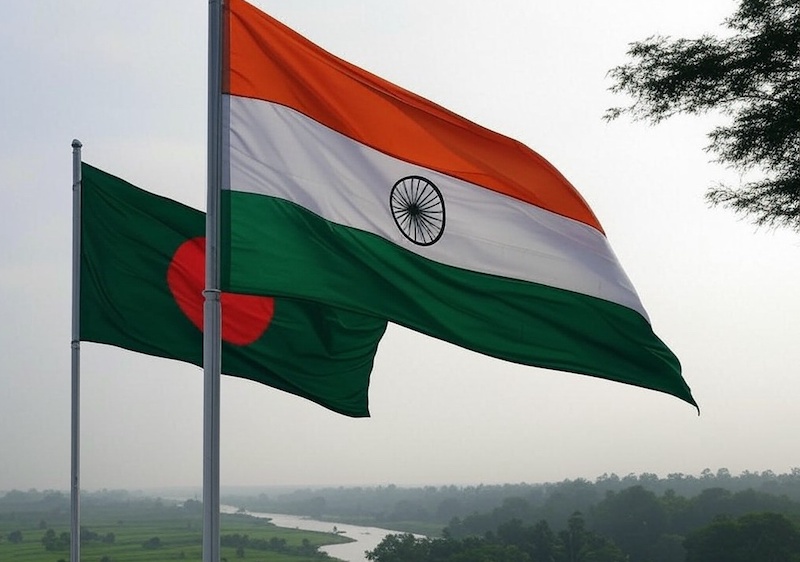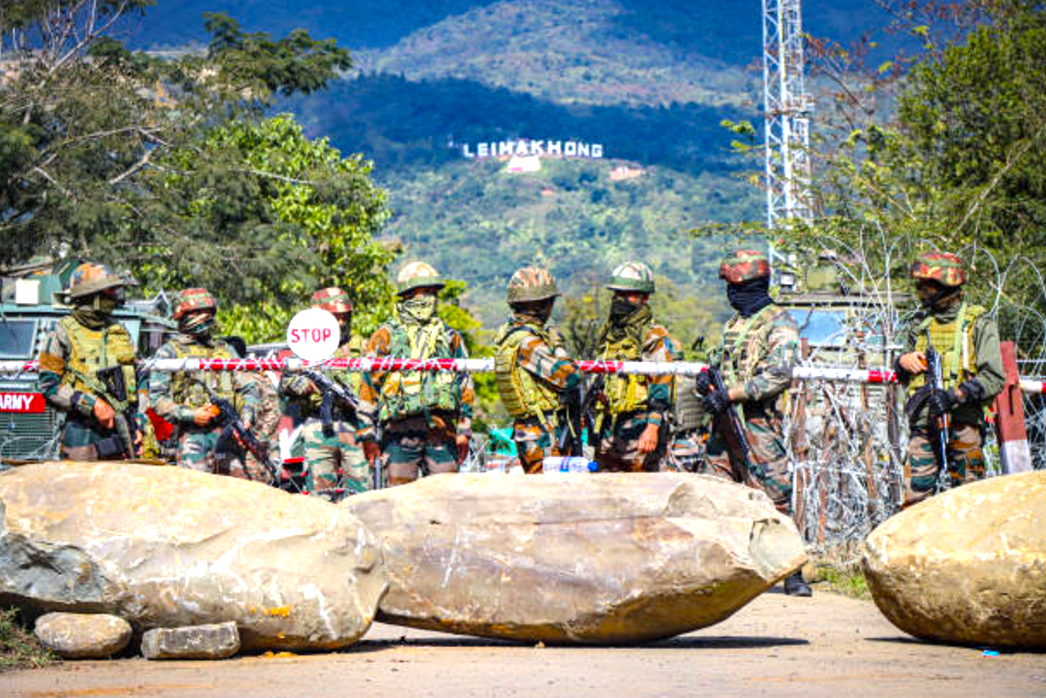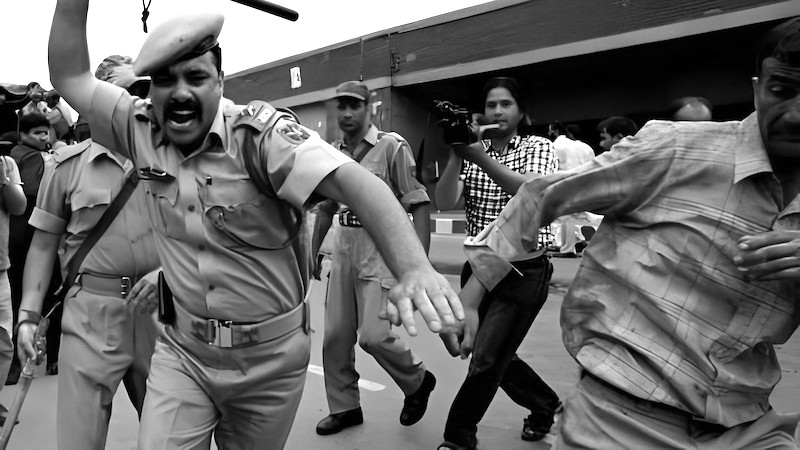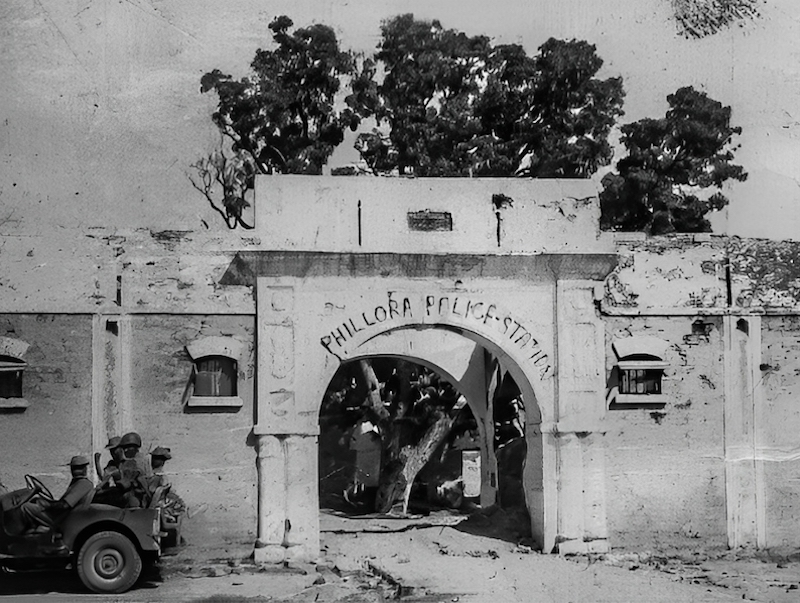 The Phillora police station in Pakistan’s Sialkot sector after its capture by Indian forces during the 1965 India-Pakistan war. (Photo: Public Domain)
The Phillora police station in Pakistan’s Sialkot sector after its capture by Indian forces during the 1965 India-Pakistan war. (Photo: Public Domain)
“For the Fighting Fifth”
In July 1964, after their challenging deployment in Ladakh during the 1962 India-China war, the Jat Regiment’s 5th Battalion (5 Jat) finally arrived in Jhansi, joining the 43 Lorried Brigade. The battalion had endured harsh conditions in Ladakh, and their return to the plains was a welcome change. However, the respite would be brief. By April 1965, responding to Pakistani aggression on the Kutch border, the entire brigade – comprising 5 Jat, 8 Garhwal, and 5/9 Gorkha Rifles – relocated to Beas on short notice. Lieutenant Colonel Bakhtawar Singh, who had led the battalion with distinction during the 1962 war, remained in command until January 8, 1965, when Lieutenant Colonel Raj Singh took over. After four months of intensive training and preparation in Beas, the battalion moved to Bazpur, merely three miles from the India-Pakistan border, on September 5.
Operation Nepal
Operation Nepal commenced on September 8 under challenging circumstances. The brigade, attached to 1 Armoured Division, was tasked with capturing the strategic Pagowal-Phillora-Chawinda axis. The initial plan called for 2 Lancers and 8 Garhwal to form the advance guard and cross the border at 5am. However, heavy rainfall on the night of September 7 disrupted these plans. A small stream breached its banks, rendering the terrain unsuitable for tank movement and causing vehicles to become bogged down. This forced a rapid change in strategy, with 5 Jat being called upon to spearhead the advance via the Jakh-Bazpur-Charwa-Sapzpir-Kaloi-Pagowal road.
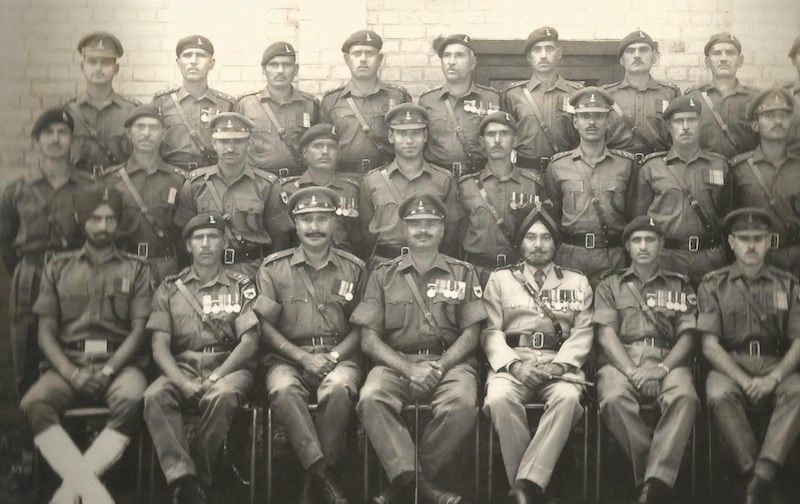 Group photograph of officers and JCOs of 5 JAT with the commander of the 43 Lorried Brigade. (Collected by Jai Samota.)
Group photograph of officers and JCOs of 5 JAT with the commander of the 43 Lorried Brigade. (Collected by Jai Samota.)
The battalion began its march at 9am, several hours behind schedule but with determined resolve. The formation was carefully planned: Delta Company under Lieutenant RK Mazumdar provided crucial flank protection alongside 62 Cavalry. Bravo Company, led by the experienced Captain Biman Kumar Das, led the advance. They were followed by Charlie Company under the decorated Captain Harish Chandra Gujral, VrC, and Alpha Company under Captain Mohinder Pal Singh, along with the battalion headquarters bringing up the rear.
Despite facing intense artillery shelling and armour fire from the Sabzpir region, the battalion successfully crossed the border at 1.30pm and reached Charwa by 3pm. The advance encountered no regular army opposition initially, but Mujahideen forces offered resistance while clearing the Bini Salehrian region. It was during this phase that the battalion faced its first significant casualties. During an enemy airstrike, Captain HC Gujral, VrC, demonstrated extraordinary courage by leaving his defensive position to engage enemy aircraft with a medium machine gun. His brave action, however, cost him his life as he was struck in the neck during strafing, along with Sepoy Sukhbir Singh. Ten other ranks from Charlie Company and Subedar Rup Ram were wounded in the same engagement. The young Lieutenant GS Kahlon, who had just returned from leave, was immediately tasked with taking command of Charlie Company.
By 6.30pm, the unit had secured the strategically important Sabzpir road junction, but intelligence reports about enemy armour concentration south of Sabzpir led to a tactical withdrawal to Bini Salehrian for the night. Throughout the night, the battalion maintained aggressive patrolling, engaging enemy forces and inflicting approximately 30 casualties while capturing several prisoners of war, all without suffering any losses themselves.
The following day saw the battalion taking over Kaloi’s defences from 8 Garhwal, consolidating their position despite heavy rains and continuous enemy pressure. The unit conducted aggressive patrols and successfully repelled several enemy probing attacks, demonstrating their tactical proficiency in defensive operations.
The advance towards Phillora on September 11 proved to be one of the most challenging phases of the operation. Heavy rains had made vehicular movement impossible, forcing the battalion to advance on foot without their RCL (recoilless) weapons and mortars. Moving along the Chakli-Rurki Kalan-Libbe-Phillora axis, they encountered significant resistance. At 10.30am, the battalion faced two enemy armoured regiments near Libbe, initiating an intense tank battle along the Libbe-Nathupur-Sadoke line. The battalion’s position near Kotli Bagga exposed them to effective high explosive and medium machine gun fire, with Charlie Company bearing the brunt of the casualties.
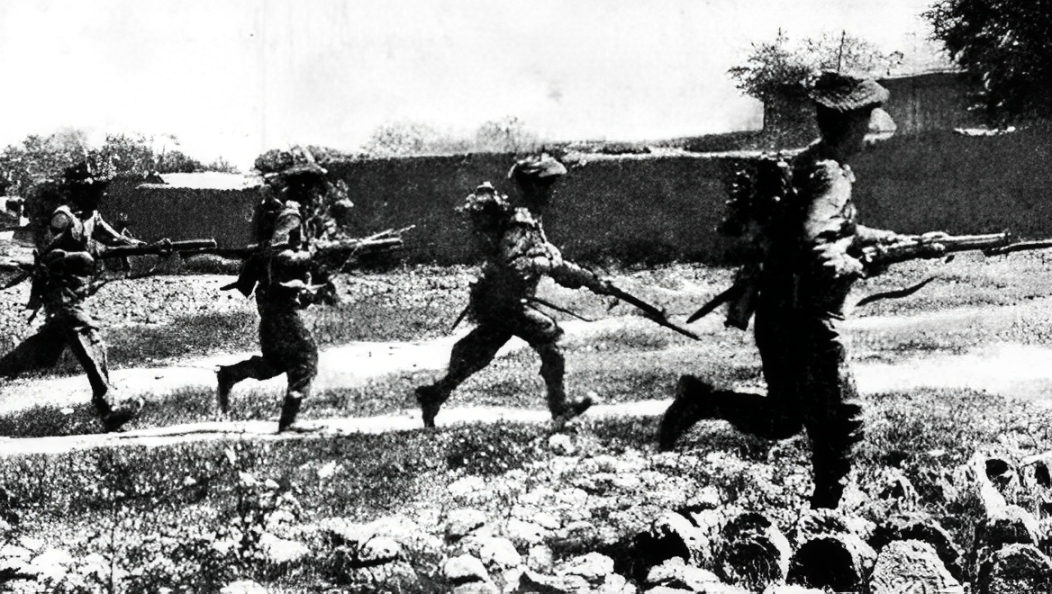 Indian troops charging towards Phillora. (Collected by Jai Samota.)
Indian troops charging towards Phillora. (Collected by Jai Samota.)
One of the most memorable acts of gallantry occurred during this engagement. When two enemy Patton tanks approached within 50 yards of Lieutenant Colonel Raj Singh’s position, he called for volunteers for a tank-hunting party from Charlie Company. Sepoy Sukhbir Singh stepped forward, demonstrating extraordinary courage by crawling towards one of the tanks and successfully destroying it with a well-placed grenade. Though he achieved his objective, he was killed by crossfire while returning to his position. His posthumous mention in dispatches was a testament to his exceptional bravery.
The Battle of Phillora itself became increasingly intense as the battalion established their positions north of the crucial Phillora-Sabazpir road intersection. Bravo and Charlie Companies were positioned east and west of the road, facing the enemy, while the other two companies provided depth to the defences. At 5pm, Bravo Company successfully repelled a determined enemy counterattack but at a heavy cost, losing two experienced platoon commanders, Naib Subedars Ram Kishan and Hanuwant Singh, along with four other ranks.
The Battle of Phillora
The night action at Phillora proved to be the defining moment of the campaign. Around 7pm, the battalion intercepted a group of enemy vehicles and tanks, leading to a series of intense engagements. In one remarkable incident, they captured the commanding officer of 9 Frontier Force’s vehicle, though the officer himself managed to escape into a sugarcane field. The battalion’s coordinated response to multiple enemy attempts to break through their positions resulted in significant enemy casualties and the capture of valuable equipment and intelligence materials.
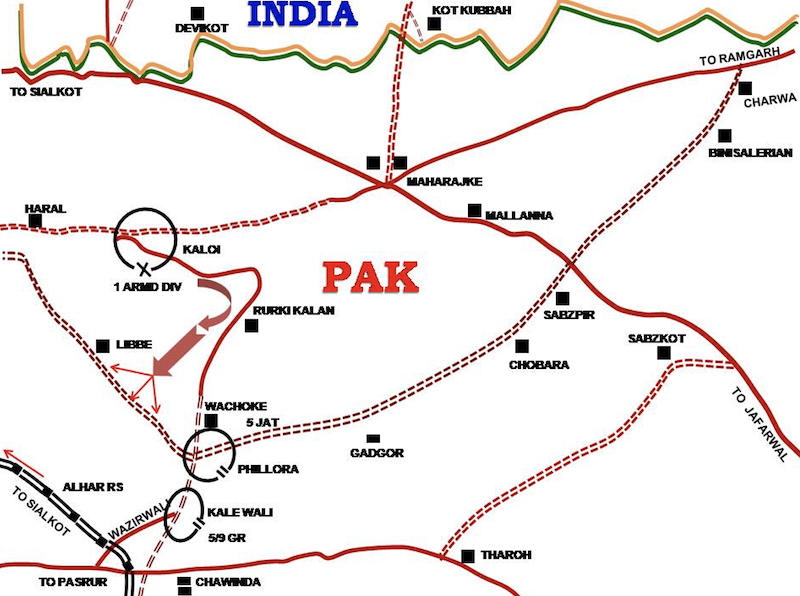 Map showing Indian Army’s advance towards Phillora.
Map showing Indian Army’s advance towards Phillora.
Perhaps the most poignant moment of the battle came during a fierce engagement when Lieutenant Colonel Raj Singh was nearly overwhelmed by enemy soldiers. Lieutenant RK Mazumdar, displaying exceptional courage, led a group of soldiers in hand-to-hand combat to rescue his commanding officer. Tragically, Lieutenant Mazumdar went missing during this action. When his body was discovered eight days later tied to a tree, it bore evidence of torture and multiple bayonet wounds, revealing the brutal nature of the conflict.
The battalion’s success at Phillora earned them high praise from Major General Rajendra Singh, GOC 1 Armoured Division, who personally visited the battlefield to commend Subedar Major Parbhu Ram and Lieutenant Colonel Raj Singh. The general’s words reflected the strategic importance of their achievement: “We are grateful to the Fighting Fifth for holding on to Phillora and having captured so much equipment.”
Capture of Kalewali
The capture of Kalewali followed on September 14, demonstrating the battalion’s offensive capabilities. The initial assault, led by Alpha Company under Captain MP Singh and Bravo Company under Captain BK Das, succeeded in taking the objective within two hours. However, strategic considerations about the position’s defensibility led to a temporary withdrawal to Wachoke. The following day, the battalion successfully recaptured Kalewali, though at a significant cost. Twenty other ranks (ORs) and Subedar Mukhtiar Singh were wounded, while six ORs made the ultimate sacrifice.
The final phase of operations saw the battalion divided into two groups while preparing for the assault on Chawinda. Under Lieutenant Colonel Raj Singh’s direct command, Charlie Company, support elements, and battalion headquarters relocated to Wazirwali, while Major AS Pawar commanded the other two companies at Kalewali. The battalion faced multiple enemy counterattacks and suffered additional losses, including the tragic death of Captain MP Singh, killed by friendly fire from 14 Rajput troops while trying to prevent further casualties by identifying themselves as friendly forces.
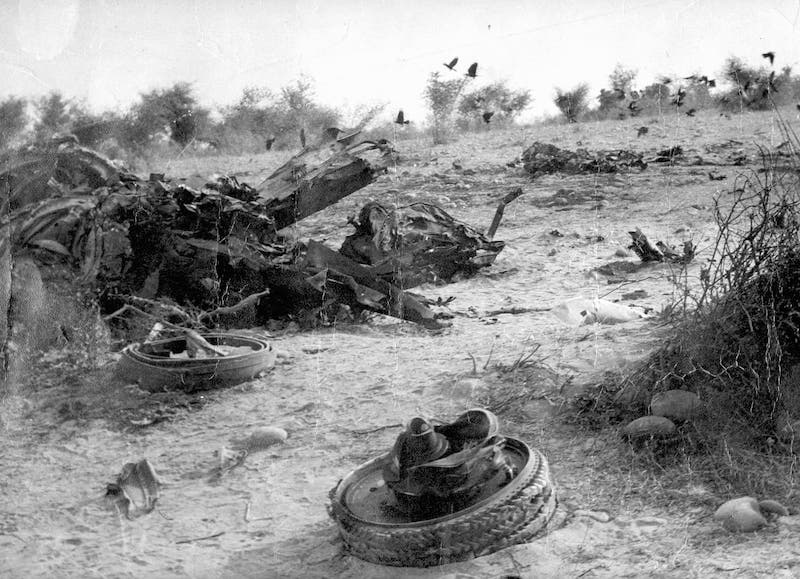 A destroyed Pakistani military vehicle in Phillora. (Collected by Jai Samota.)
A destroyed Pakistani military vehicle in Phillora. (Collected by Jai Samota.)
The battalion’s extended deployment under constant fire from September 8 finally ended when they were relieved by 4 Madras on September 22.
The campaign’s toll was significant: 41 all ranks killed and 102 wounded. Notable casualties included Captain HC Gujral, VrC, who had earned his gallantry award as a young officer in 1962 only to fall as a company commander in 1965, Captain MP Singh, and the brave Lieutenant RK Mazumdar.
Though the battalion received fewer gallantry decorations than their actions might have warranted, they earned the “Battle Honour Phillora” and became known as the “Phillora Captors” – a title that became their proud moniker.
The following awards were announced:
Mentioned in Despatches
* Subedar Major Prabhu Ram
* Subedar Richhpal Singh
* Havildar Ram Kishan (Posthumous)
* Sepoy Sukhbir Singh (Posthumous)
Chief of Army Staff’s Commendation Card
* Lieutenant Colonel Raj Singh
* Second Lieutenant Gurdev Singh (Posthumous)
The battalion’s actions during the Phillora campaign demonstrated exceptional courage, tactical prowess, and sacrifice, cementing their place in military history. Their successful capture and defence of strategic positions, despite heavy casualties and challenging conditions, exemplified the highest traditions of the Indian Army. The Fighting Fifth’s legacy at Phillora remains a testament to their indomitable spirit and unwavering dedication to duty, inspiring future generations of soldiers.
The Battle of Phillora stands as a reminder of the complex nature of modern warfare, where success depends not just on superior firepower or tactics, but on the human elements of courage, leadership, and sacrifice. The 5 Jat’s experience demonstrates how a well-trained and motivated infantry battalion can play a decisive role even in operations dominated by armoured warfare, setting a standard for combined arms operations in the Indian Army.
Disclaimer: The views expressed in this article are author’s own and the authenticity of the events mentioned are his own findings. His views don’t necessarily reflect the views of India Sentinels and India Sentinels can’t vouch for the authenticity of the events mentioned .If any reader has any dispute with the veracity of certain facts and/or have additional information, kindly write to us at [email protected].
Follow us on social media for quick updates, new photos, videos, and more
X (formerly Twitter): https://x.com/indiasentinels
Facebook: https://facebook.com/indiasentinels
Instagram: https://instagram.com/indiasentinels
YouTube: https://youtube.com/indiasentinels
© India Sentinels 2025-26
